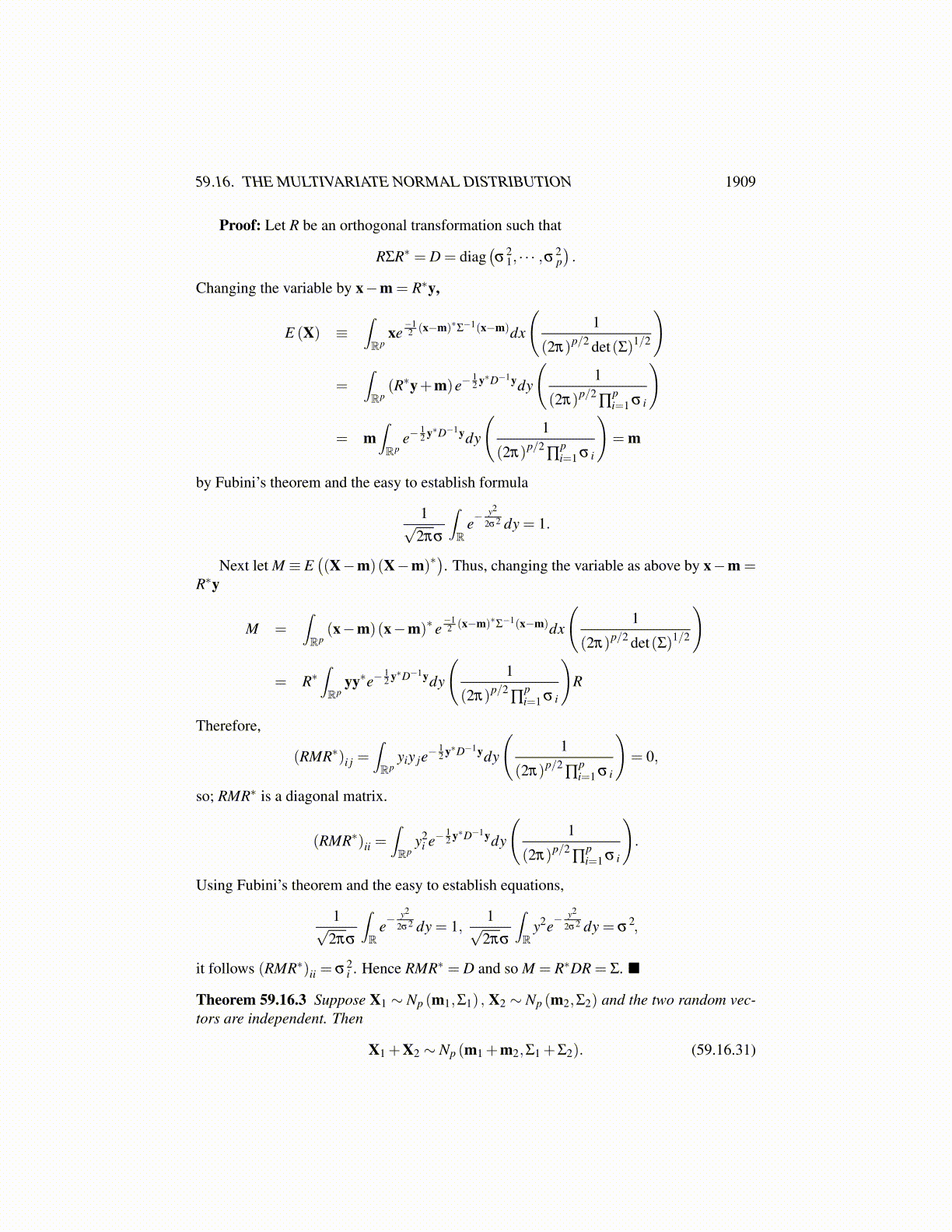
59.15. THE CONVERGENCE OF SUMS 1909
Now ∩ j−1i=1 [||Si|| ≤ r]∩
[∣∣∣∣S j∣∣∣∣> r
]is of the form[(
ξ 1, · · · ,ξ j
)∈ A]
for some Borel set, A. Then letting Y = ∑Ni= j+1 ξ i in Lemma 59.15.4 and Xi = ξ i, 59.15.28
equals
P
(∩ j−1
i=1 [||Si|| ≤ r]∩[∣∣∣∣S j
∣∣∣∣> r]∩
[∣∣∣∣∣∣∣∣∣∣S j−
N
∑i= j+1
ξ i
∣∣∣∣∣∣∣∣∣∣≤ r
])= P
(∩ j−1
i=1 [||Si|| ≤ r]∩[∣∣∣∣S j
∣∣∣∣> r]∩[∣∣∣∣S j− (SN−S j)
∣∣∣∣≤ r])
= P(∩ j−1
i=1 [||Si|| ≤ r]∩[∣∣∣∣S j
∣∣∣∣> r]∩[∣∣∣∣2S j−SN
∣∣∣∣≤ r])
Now since∣∣∣∣S j (ω)
∣∣∣∣> r,[∣∣∣∣2S j−SN∣∣∣∣≤ r
]⊆
[2∣∣∣∣S j∣∣∣∣−||SN || ≤ r
]⊆ [2r−||SN ||< r]
= [||SN ||> r]
and so, referring to 59.15.27, this has shown
P(A j ∩ [||SN || ≤ r])
= P(∩ j−1
i=1 [||Si|| ≤ r]∩[∣∣∣∣S j
∣∣∣∣> r]∩[∣∣∣∣2S j−SN
∣∣∣∣≤ r])
≤ P(∩ j−1
i=1 [||Si|| ≤ r]∩[∣∣∣∣S j
∣∣∣∣> r]∩ [||SN ||> r]
)= P(A j ∩ [||SN ||> r]) .
It follows that
P
([sup
k≤N−1||Sk||> r and ||SN || ≤ r
])=
N−1
∑i=1
P(A j ∩ [||SN || ≤ r])
≤N−1
∑i=1
P(A j ∩ [||SN ||> r])≤ P([||SN ||> r])
and using 59.15.26, this proves the lemma.This interesting lemma will now be used to prove the following which concludes a
sequence of partial sums converges given a subsequence of the sequence of partial sumsconverges.
Lemma 59.15.6 Let {ζ k} be a sequence of independent random variables having values ina separable real Banach space, E whose distributions are symmetric. Letting Sk ≡∑
ki=1 ζ i,
suppose{
Snk
}converges a.e. Also suppose that for every m > nk,
P([∣∣∣∣Sm−Snk
∣∣∣∣E > 2−k
])< 2−k. (59.15.29)